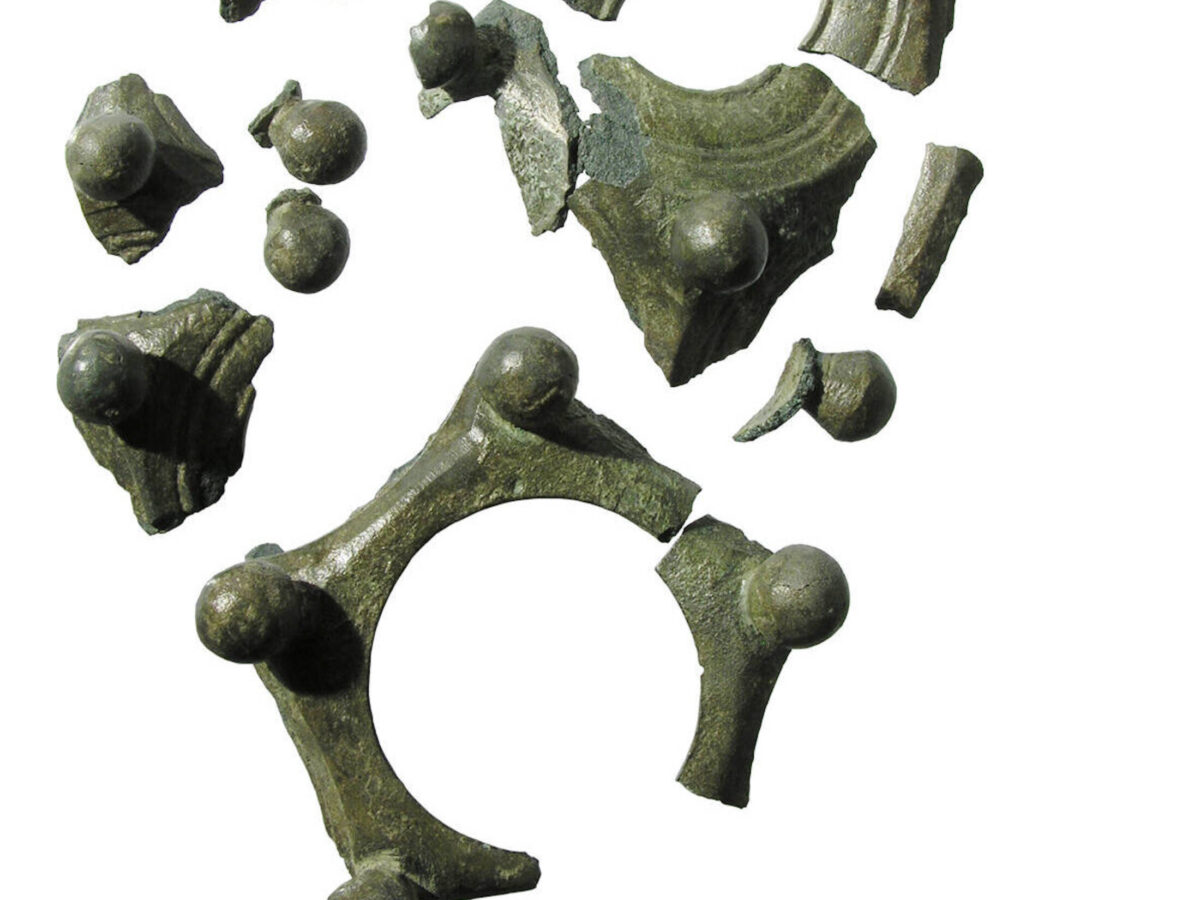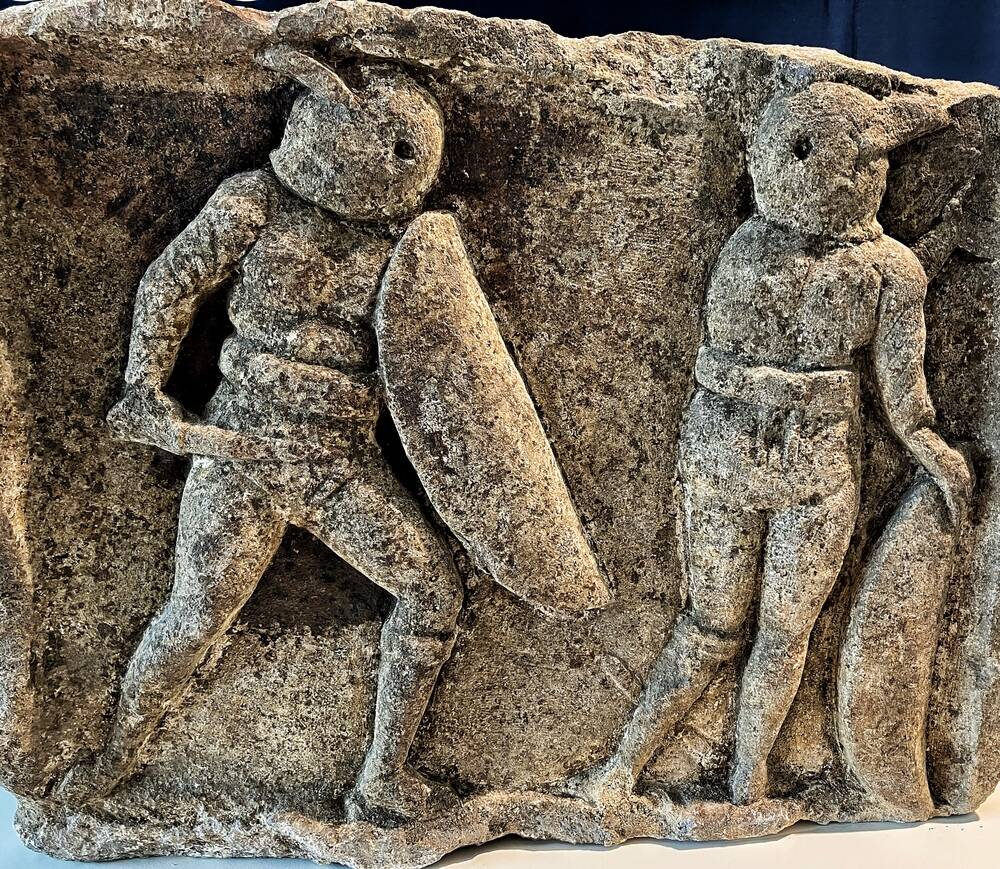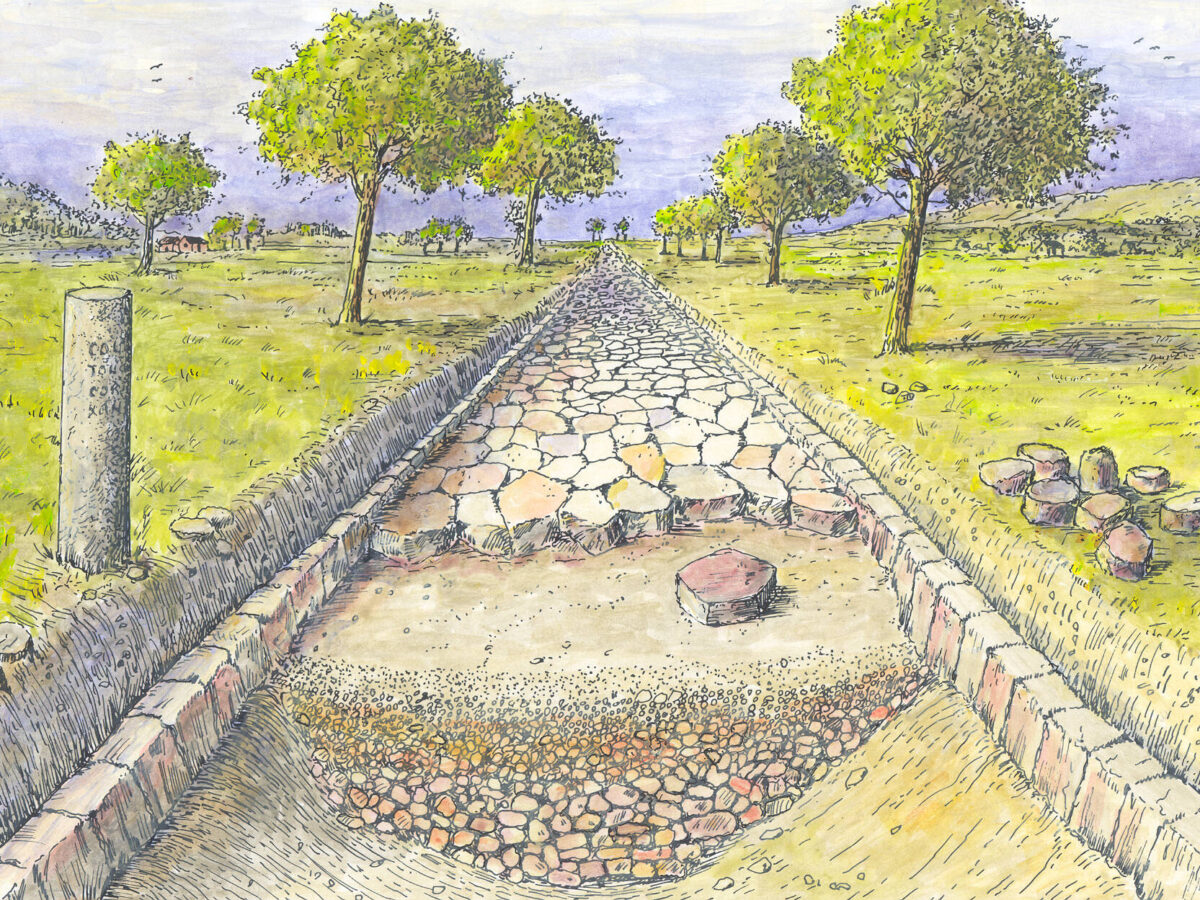Maastricht Museum showcases Roman heritage
Author: Harry Lindelauf
Photography: Harry Lindelauf

The first impression is immediately a showpiece: the stone statue of a mighty lion dominating its prey, a defeated horse. The new Maastricht Museum in Centre Céramique knows that a first impression is important, and therefore immediately presents this 1,800-year-old sculpture, which was dredged up from the Maas in 1963 at the site of the Roman bridge.
The Maastricht Museum divides the city’s history into five periods, presented alternately in a green and a blue environment. The Roman period is represented by a selection from the rich collection of finds housed in the Centre Céramique depot. That collection is so extensive that choosing from it is a “luxury problem,” says chief curator Astrid Smeets. According to her, the intention is to complete the presentations in the coming months, after which the content will change periodically.

Olterdissen and Rieu
It is remarkable that the museum tailors these changes to the wishes of the visitors. Director Wim Hupperetz explains: “We do things differently from usual. Normally, experts determine what the visitor gets to see. We want our presentation to be more bottom-up; visitors can indicate what they would like to see via a form or through the website.”
The first reactions show a preference for local celebrities such as Fons Olterdissen, Pieke Dassen, and yes, André Rieu. The latter does not yet seem ready, in life and health, for a place in the museum, but Wim Hupperetz does see him as a suitable candidate to record the audio tour — naturally in the Maastricht dialect.

Gladiators
Another striking Roman find is a gravestone depicting two gladiators at the end of a fight. Helmet, shield, sword, loincloth, and arm and leg protectors are clearly recognisable. The outcome of the battle is equally clear: the gladiator on the right has been defeated and gestures with his hand to beg for his life.
More puzzling is the dodecahedron displayed in one of the cases. The remains were found as small fragments between Maastricht-Mariënwaard and Rothem, and thanks to 3D printing, the original bronze object has been reconstructed. What no one has yet succeeded in discovering, however, is what the Romans actually used the dodecahedron for.
Jupiter column
The second reconstruction is the work of archaeologist Titus Panhuysen. Based on fragments found in 1865, 1910, and 1983, he drew the Jupiter column that once stood on the site of today’s Hotel Derlon. According to Panhuysen, the column was nine metres high and featured sculpture on all four sides. On top stood a statue of Jupiter — supreme god and god of the sky and weather. The column was part of a sanctuary that probably also included a temple. The Maastricht Museum has reproduced Panhuysen’s drawing at full column height and will display the fragments alongside it.
The Maastricht Museum at Plein 1992 lies close to the Via Belgica walking route through Maastricht. The museum will take its final form in the course of 2023. Soon, it will be expanded on the first floor to include the space between Centre Céramique and Café Zuid. Temporary exhibitions will be added to the permanent display. Until 7 January 2024, that is “Maastricht 1673 – the Sun King conquers the city.”
See www.maastrichtmuseum.nl for more information and opening times.

